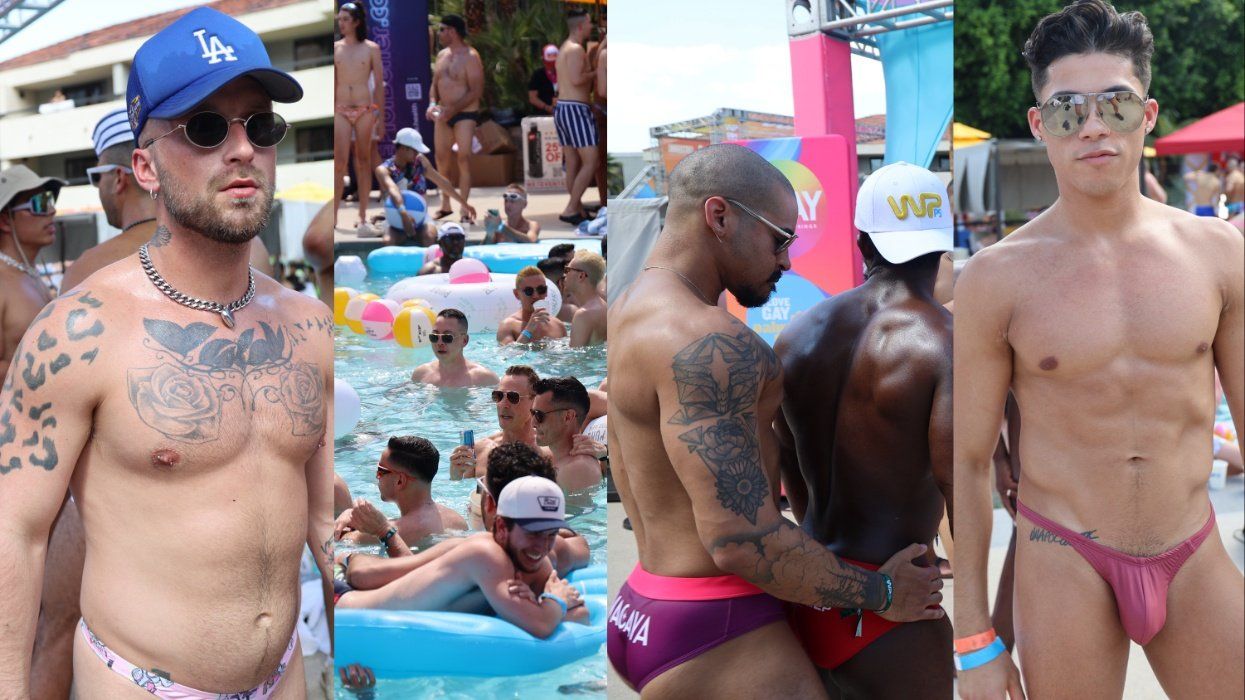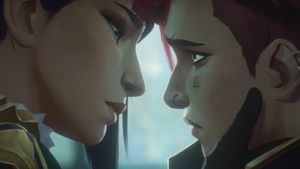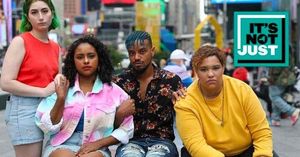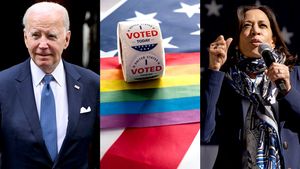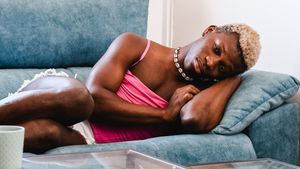CONTACTCAREER OPPORTUNITIESADVERTISE WITH USPRIVACY POLICYPRIVACY PREFERENCESTERMS OF USELEGAL NOTICE
© 2024 Pride Publishing Inc.
All Rights reserved
All Rights reserved
By continuing to use our site, you agree to our Private Policy and Terms of Use.
A recent exhibit at the Deschler Gallery on the Auguststrasse in Berlin sent out a clear message: Forget your dated, cozy German cliches, the Old World universe of polka parties, Hummel figurines, and cuddlesome kitsch.
The exhibit did admittedly feature its own serving of kitsch -- in the form of big stuffed animals. But the theme was "How to Kill Your First Love," and sprawled out on the gallery floor, like a gruesome calling card, was a teddy bear with a slit throat. Adding to the button-eyed body count: a rubber duck squeezing out one last high-pitched squeak after having taken an arrow to the forehead.
The nursery room bloodbath felt not at all out of place in Berlin, Germany's ever-subversive city, the renegade capital that continually snaps the straps of the lederhosen, smashes the Hummels, and always goes its own wayward way. And its reputation for artistic edginess has only increased with the fall of the Wall, which meant that East Berlin's grittiness and West Berlin's decadent life-is-a-cabaret sensuality have finally paired up for good.
The immediate payoff of that pairing has been a renewed art-star status for Berlin. Always one of Europe's modern art capitals, the free -- thinking, free -- wheeling city has consistently attracted Germany's dispossessed pacifists, bohemians, and artists. Among them were vaunted 20th-century German artists Georg Grosz and Emil Nolde, along with leading exponents of both dadaism and expressionism.
Although the art scene declined after World War II, since the collapse of the Berlin Wall the city has drawn a new generation of the determinedly arty. Now Berlin again ranks first among buyers, dealers, and artists as the Continent's most fearless art center -- a place that doesn't just accept the most controversial shows but actively seeks them.
"The new Berlin feels like a fresh country," says Olaf Hajek, a gay Berlin artist whose retro folklike paintings -- more pretty than iconoclastic -- signal the city's indifference to firm artistic boundaries. "Everything since the Wall came down is new and open to change. The energy has drawn artists from all over the world partly because there was still cheap studio space. The art galleries followed, displaying such diversity -- every kind of art, gay and straight. Because in Berlin, who cares? Everything is mixed."
While the recent profusion of galleries has moved into the multiethnic Kreuzberg district and industrial areas by the River Spree, the best place to start the arty marathon part of your Gay Grand Tour is on the gallery-dense Auguststrasse in the Mitte area, which is again Berlin's center after being appropriated by East Berlin in the postwar years. Begin at the street's anchoring Kunst-Werke, which exhibits both emerging artists and powerhouse figures. Tellingly, one of its major shows this year, an homage to gay filmmaker Rainer Werner Fassbinder, features a continuously running loop of the bad boy's 15 1/2-hour masterwork, Berlin Alexanderplatz, based on Alfred Doblin's Weimar-era novel -- which should be enough Fassbinder to last anyone. Then waltz down the street past nude mannequins sprouting neon signs at the Galerie Rossella Junck and boutiques stocked with abstract paintings and photos.
If you want a full-blown day-into-night boho blowout, continue on to Shiro I Shiro, where agents treat their pet artists to tapas at a long pearl-inlaid communal dining table, and then head for Panorama Bar, housed inconspicuously in a creaking old factory, or club SO36. Both are famous for their mixed weekend crowds of long-haired hipsters, themselves luminous enough to double as art -- and if you're lucky, as performance pieces.
Save your next day for a tour of Berlin's museums, also emblematic of the city's almost compulsive artistic bent. How compulsive? More than 25 new museums have opened in Berlin since 1996. Among the best: the Hamburger Bahnhof Museum fur Gegenwart, devoted to cutting-edge contemporary art, and the Jewish Museum, where the slanting corridors are purposely unsettling, simulating history's horror show. The constellation of old museums being restored on the Mitte's famous Museum Island reveal the staying power of Berlin's art-world prominence.
The newly reopened Bode-Museum features a peerless collection of Byzantine art, and the neighboring Alte Nationalgalerie (Old National Gallery) boasts a wealth of 19th-century German romantic and realist paintings that may now look quaint. In their day, they were as fearless and avant-garde as any decapitated teddy.
BERLIN GALLERIES
Kunst-Werke
Goff+Rosenthal
Jan Winkelmann
Nice & Fit
THE GRAND TOUR
The Grand Tour: Euro culture capitals
All the world's a stage in London
Down the hatch in Dublin
Life's a banquet in Copenhagen
Model behavior in Milan
From our Sponsors
Most Popular
Ron Amato Retrospective: 75 Gorgeous Images of Queer Men
March 07 2021 12:00 AM
Just in Time for Pride – The 15 Gayest Cities in the World in 2023
April 12 2023 6:47 PM
Turkish Oil Wrestling: Male Bonding at the Kirkpinar Festival
December 20 2022 2:20 PM
The 13 Least Visited National Parks
January 07 2023 5:00 AM
Here are the Best Gay Sex and Male Nudity Scenes in 2022
April 19 2023 5:23 PM
OnlyFans Star Reno Gold on His New Boyfriend and Travel Show
December 16 2022 3:10 PM
Get Soaked! with These 35+ Steamy Pool Pics From This Year’s White Party
May 25 2023 9:29 AM
Slovakian Jocks With Nothing to Hide
September 28 2021 3:00 PM
12 Years of Intimate Photos of Same Man - Taken by His Partner
August 29 2022 4:00 AM
20 Thirsty Pics of #SniffiesRush Campaign Celebrating Frat Life
December 16 2022 3:19 PM
Outtraveler: Featured Video
Latest Stories
Finding community on our first luxury LGBTQ+ cruise
November 26 2024 5:00 AM
Russia bans adoption from gender-affirming nations
November 25 2024 3:02 PM
Which trans beauty will be crowned the next Miss International Queen – USA?
November 23 2024 10:39 AM
Tom of Finland Art & Culture Festival returns to L.A. just in time for the holidays
November 21 2024 8:54 AM
KUST. introduces 'Thong 01' in revealing new campaign
November 20 2024 5:45 PM
Malta unveiled: Your ultimate LGBTQ+ guide to the Mediterranean paradise
November 20 2024 12:19 PM
EDC Orlando should rebrand as a Pride event — gays are everywhere
November 19 2024 2:05 PM
Santa’s Secret, the naughty immersive holiday experience, returns to NYC
November 15 2024 1:55 PM
‘Forgetting the Many’ remembers many more than just gay WW2 codebreaker Alan Turing
November 15 2024 10:52 AM
Say hello to Elska's queer men of Salt Lake City
November 15 2024 10:26 AM
BOYS! BOYS! BOYS! opens Gallery Café in London
November 06 2024 4:24 PM
Cedric Gervais returns to his 'Summertime Sadness' roots with EDC Orlando performance
November 04 2024 3:21 PM
Out and About with Jeff Hiller
October 30 2024 11:43 AM
Experience romance in the clouds at this elevated rainforest resort
October 23 2024 5:00 AM
Troye Sivan & Charli xcx's 'Sweat Tour' is the must-see show of 2024
October 16 2024 2:52 PM
NewFest returns to NYC on Thursday with over 140 queer titles for its 36th film festival
October 07 2024 5:39 PM
Asheville heartbreak: Will LGBTQ+ cocktail bar rise from the ruins?
October 04 2024 10:12 AM
Out and About with Sasheer Zamata
October 03 2024 3:08 PM
equalpride CEO Mark Berryhill on LGBTQ+ History
October 01 2024 12:52 PM
Ashland and its Oregon Shakespeare Festival is the Pacific Northwest’s hidden gem
September 27 2024 3:30 PM












